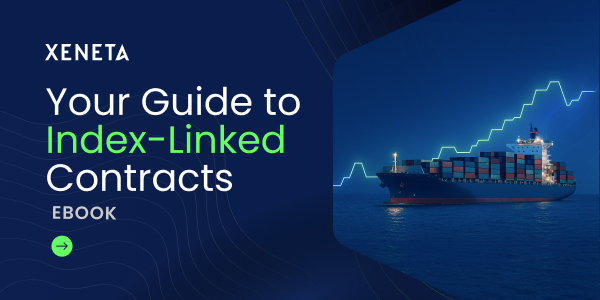Global air cargo volume growth slowed in October but still recorded a stronger than expected +4% rise year-on-year, despite the easing of frontloading of imports by businesses countering the cost of tariffs and effects of the US de minimis ban, according to industry analysts Xeneta.
The latest monthly data supports Xeneta’s forecast in September of an overall +3-4% growth in demand for 2025, but more worrying trends indicate challenging times ahead for airlines and freight forwarders as the market is “definitely starting to favour shippers more than it has for the past few years,” said Chief Airfreight Officer, Niall van de Wouw.
October saw a sixth consecutive monthly fall in global air cargo spot rates, with a -3% decline year-on-year to USD 2.58 per kg. Seasonal contract rates, valid for over a month, fell even faster than spot prices. Averaging USD 2.31 per kg, they were down -8% year-on-year, reflecting a subdued outlook among freight forwarders and carriers.

A slowing market and ‘a harsh signal’
Van de Wouw warned falling volumes between Europe–North America – a market dominated by general air cargo and less exposed to the US de minimis ban - may be a “bellwether for the rest of global trade”. Despite the +4% growth in the global market, Europe-North America demand fell -6% year-on-year in October, while spot rates on the corridor rose a meagre +4% year-on-year, a sharp deceleration from the +23% annual growth seen earlier in 2025.
“When we look at the global data for October, I would have expected the number to be closer to zero because of the busy Q4 for air cargo last year as well as the trade disruption still going on. But the numbers indicate it was stronger than anticipated. The consensus, however, is of a market slowing down, just not as fast as expected – and a -6% drop-off in volumes on the Transatlantic market, a major trade lane, is a harsh signal,” he said.
October data underscored a cooling market, with demand lagging behind the +5% rise in supply for the second month this year.
Across the top three global trade lanes, air cargo peak season growth momentum remained subdued in October. Adjusting for distortions from Super Typhoon Ragasa by averaging late-September and Golden Week volumes, Asia Pacific to Europe cargo demand rose +11% in October versus August - well below the +16% gain recorded in the same period last year. Corresponding spot rates climbed +5%, but were well below the +9% rise seen a year earlier.

China-Europe e-commerce sales surge +62%
E-commerce continued to propel Asia-Europe airfreight volumes as China’s e-commerce behemoths accelerated their share of markets outside of the US. China Customs data shows low-value and e-commerce sales to Europe surged +62% year-on-year in September, double the growth rate of a year ago and far outpacing China’s overall e-commerce expansion of +18%.
By contrast, China-to-US e-commerce shipments fell for the fifth straight month, down -34% year-on-year in September, though the decline moderated from a trough of -49% in June. As freighter capacity shifts from the Transpacific to the Asia-Europe corridor, spot rates from Northeast Asia to Europe also slipped, down -5% year-on-year, but still milder than the double-digit declines seen on Asia–North America routes.
Compared with two months earlier, the Northeast Asia and Southeast Asia to Europe corridors proved more resilient, with spot rates rising +6 and +7% respectively, versus -3% and +1% changes on the Northeast and Southeast Asia–North America routes respectively. Backhaul rates from North America to Northeast Asia showed a notable rebound, climbing +11% over the same period.
More focus on cost as revenues disappoint
While the Transatlantic corridor is expected to see modest, supply-driven rate increases in the coming months as airlines trim capacity for the winter season, van de Wouw expects forwarders to emphasis “more focus on cost savings, because revenues will disappoint. You need to mind your costs more than when you’re supporting growth. The announcements by companies about reductions in cost are increasing left and right – and will continue - and we would not be seeing that if the market outlook was more positive.”
He adds: “For many major forwarders, organic market growth is not expected to be enough to keep their investors happy. So, as we head into 2026, I expect them to be going for market share. You can’t create more airfreight when the demand’s not there, so you’ve got to win it from someone else, and that will create more downward pressure on rates.
Market more favourable for buyers
“When it comes to procuring freight transportation services, that will make the market more favourable to the buyers, not the sellers. However, lower rates will only benefit shippers if they can sell their products. I think most shippers would rather have 10% higher freight costs and 10% higher sales than 10% lower freight costs and 10% lower sales.”
“There’s no question that the airfreight market has gained from the global economic disruption and fears caused by tariffs, in particular – and it would be foolish to think the tariff situation will be over any time soon. But, as the noise starts to subside, the industry is being reminded that there is only limited growth in the general freight market and that is causing lower expectations for 2026,” van de Wouw stated.
Ends
%201.png)




